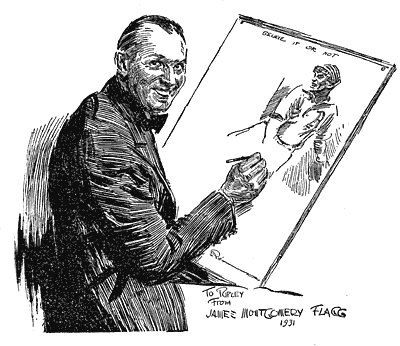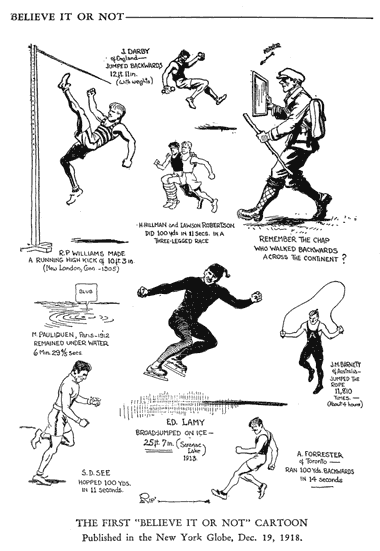
“Much to my surprise,” Ripley wrote, “there was considerable comment from readers about my first Believe It Or Not. The editor suggested that I make another one if I could gather together enough ‘stunts.’ A week later, I had enough facts for another one, and it seemed to be more popular than my usual run of cartoons.”
He started doing one a week. And he soon began adding unusual non-sports facts to his pictorial report, and before long, he was doing a panel every day--a jumble of pictures about strange-looking pets and people, vegetables that resembled movie stars, compulsive accomplishments, and puzzles, palindromes, tongue-twisters, and brain-teasers.
Ripley used to say that he enjoyed being called a liar. “I venture to say I have been called a liar more often than anyone else in the world,” he wrote. “And I don’t mind it a bit. On the contrary, I am flattered and complimented because it means that my cartoon--or broadcast or movie--contained some strange fact that was unbelievable and therefore most interesting.”
A collection of his Believe It Or Not panels was published in 1926, leading to syndication and a contract with Warner Brothers for a series of twenty-six short films. In the 1930s, Ripley took a much ballyhooed world tour to search for oddities, and in 1933 for Chicago’s Century of Progress Exhibition, many of the artifacts he’d collected were exhibited in his “Odditorium.” Finally, for the last incredible fact: believe it nor not, Ripley’s first attempt at his subject that winter’s day in 1918 he labeled “Champs and Chumps.” His editor changed it, giving the feature the title that would ring through the ages.

